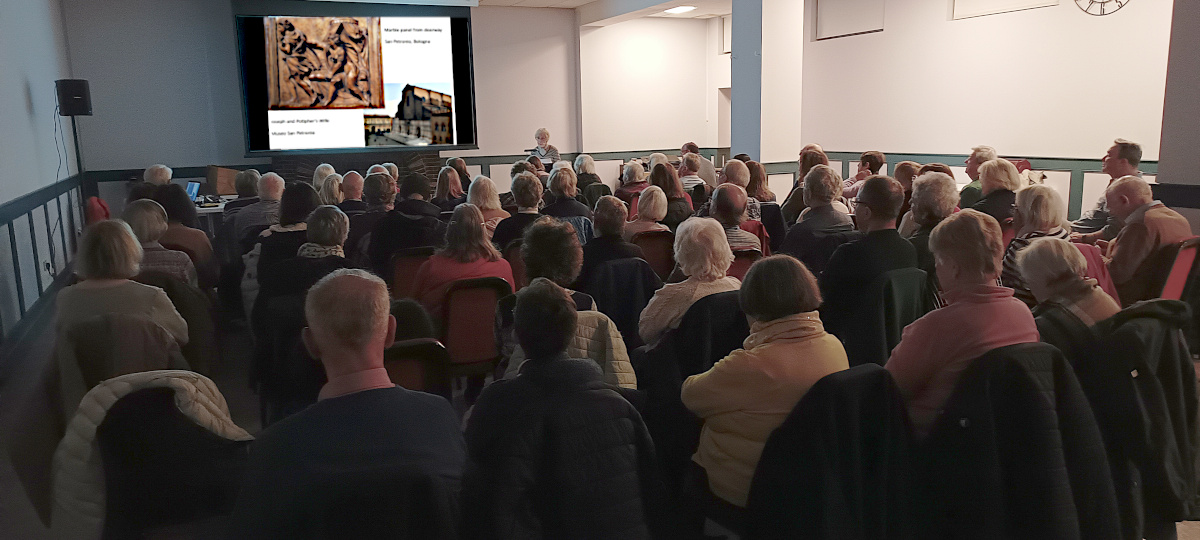Our course on Female Artists before 1800 continued on Friday 15 November with our lecturer Jennifer Mills guiding us through the work of Prosperzia De’Rossi, Suor Plautilla Nelli and Sofonisba Anguissola. All of these women have left their mark on the art collections of the world. Jennifer was using The Lives of Artists (2nd Edition) by Georgio Vasari, published in 1568 as her guide.
Prosperzia De’Rossi was listed as the first female sculptor, and although there are not many full size works surviving, we did learn about the marble door panel showing Joseph and Potipher’s wife, to be found in the Museo San Petronio, Bologna, Italy (see top). However, Prosperzia’s speciality was not full size works but miniatures, and in particular she was expert at carving peach stones and cherry stones. One piece showed the family crest of the Grassi family carved in a peach stone; another was a pendant featuring a cherry stone with one hundred tiny faces carved into it.
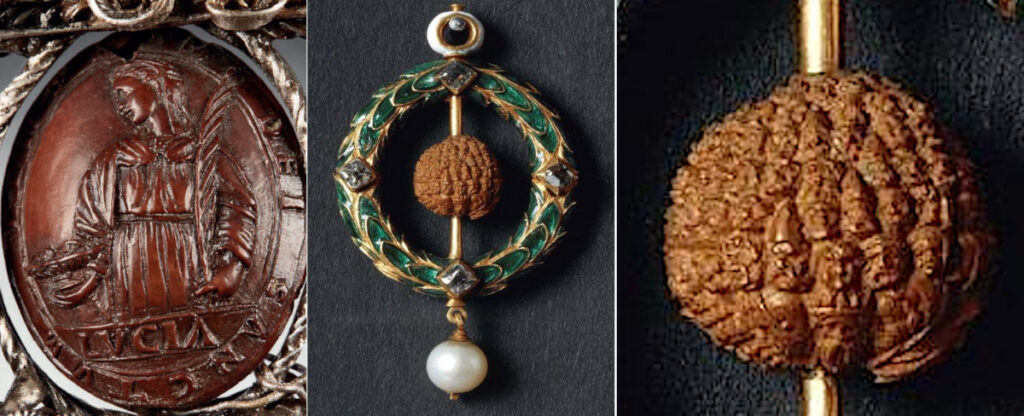
We then moved on to Suor Plautilla Nelli who was a Dominican nun in the convent of Saint Catharine of Siena in Florence, We are not sure exactly how she looked, but it is possible that she appears in some of the works she created as the first full time female artist recorded in Florence. Just as today one can buy biscuits, sweets and cakes from a convent to help their funds, at the time of Suor Nelli, she sold her paintings and miniatures to help her convent. Many of her paintings featured religious themes including the Annunciation, the Pentecost (see below), the Lamentation of the Saints and the Last Supper. Suor Nelli is thought to have learned her artistic skills by studying under Fra Bartolomeo, and some of her compositions certainly reflect his works. In particular, Jennifer made a comparison between their paintings of the Lamentation of the Saints.
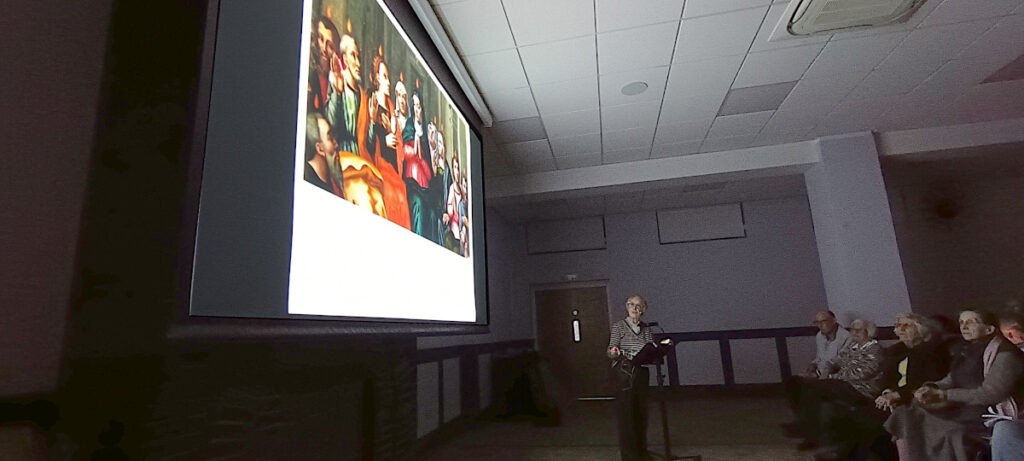
We then moved on to Sofonisba Aguissola, who as well as being an artist, had had a very exciting and complicated life between her time in Italy, in Spain and in Sicily. She had met both Michaelangelo and Van Dyck, even being painted by the latter. Of particular interest was the painting of herself being painted by Bernadino Campi (her tutor), which when cleaned had shown that she was guiding the hand of the artist painting her. That had later been painted over by her, and today that overpainting detail has been maintained.
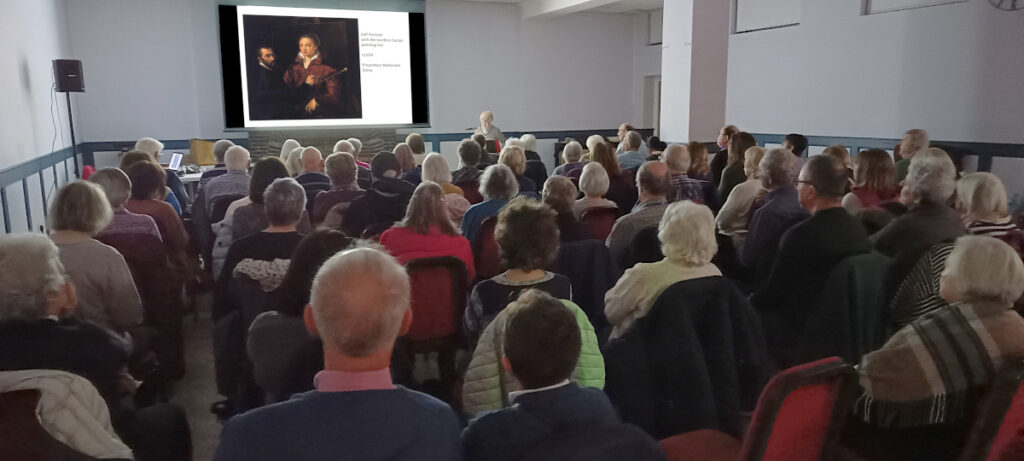
She had painted many members of the Italian nobility, and had painted many of the Spanish nobility, including Don Carlos, whose story is told in the Verdi opera of the same name. She had even ruled in the Spanish Netherlands following the death of her husband who had previously ruled there. One of seven children, Sofonisba had painted the other members of her family several times, including a game of chess being played by the girls. After the death of her second husband, she joined the Franciscan order and lived in a convent where she was painted by Van Dyck. We closed the first half with a quick look at Levina Teerlinc who is thought to have caught the likeness of Queen Elizabeth I in a miniature held in the Royal Collection.
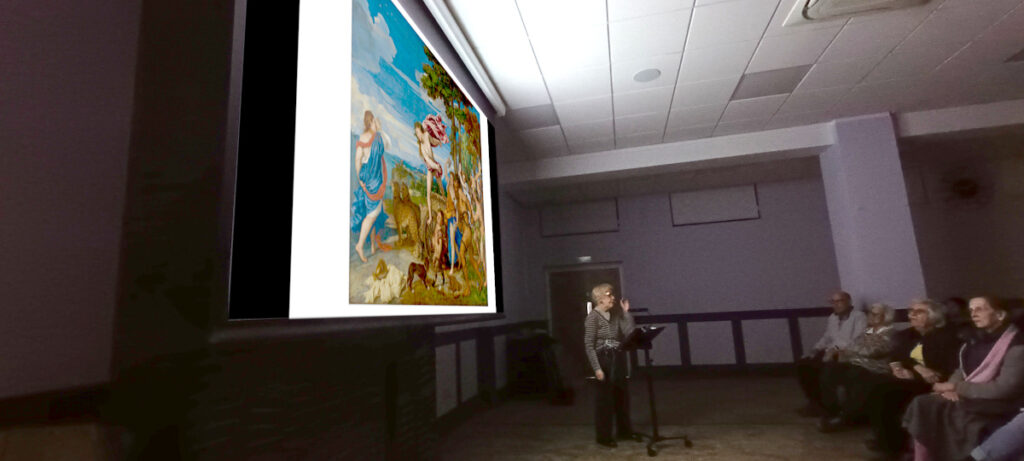
After a short coffee break, we returned to a further examination of a painting in the National Gallery – this time Bacchus and Ariadne, painted by Titian between 1520 and 1523. Jennifer told the legend of Ariadne being abandoned by Theseus on Naxos, and then examined the many features in the painting from the depiction of Laocoon to the landscape in the distance and the significance of tiny details on the minor characters in the story. Another excellent choice that was much enjoyed by all.
Our next Art History session takes place on 29 November 2024.

